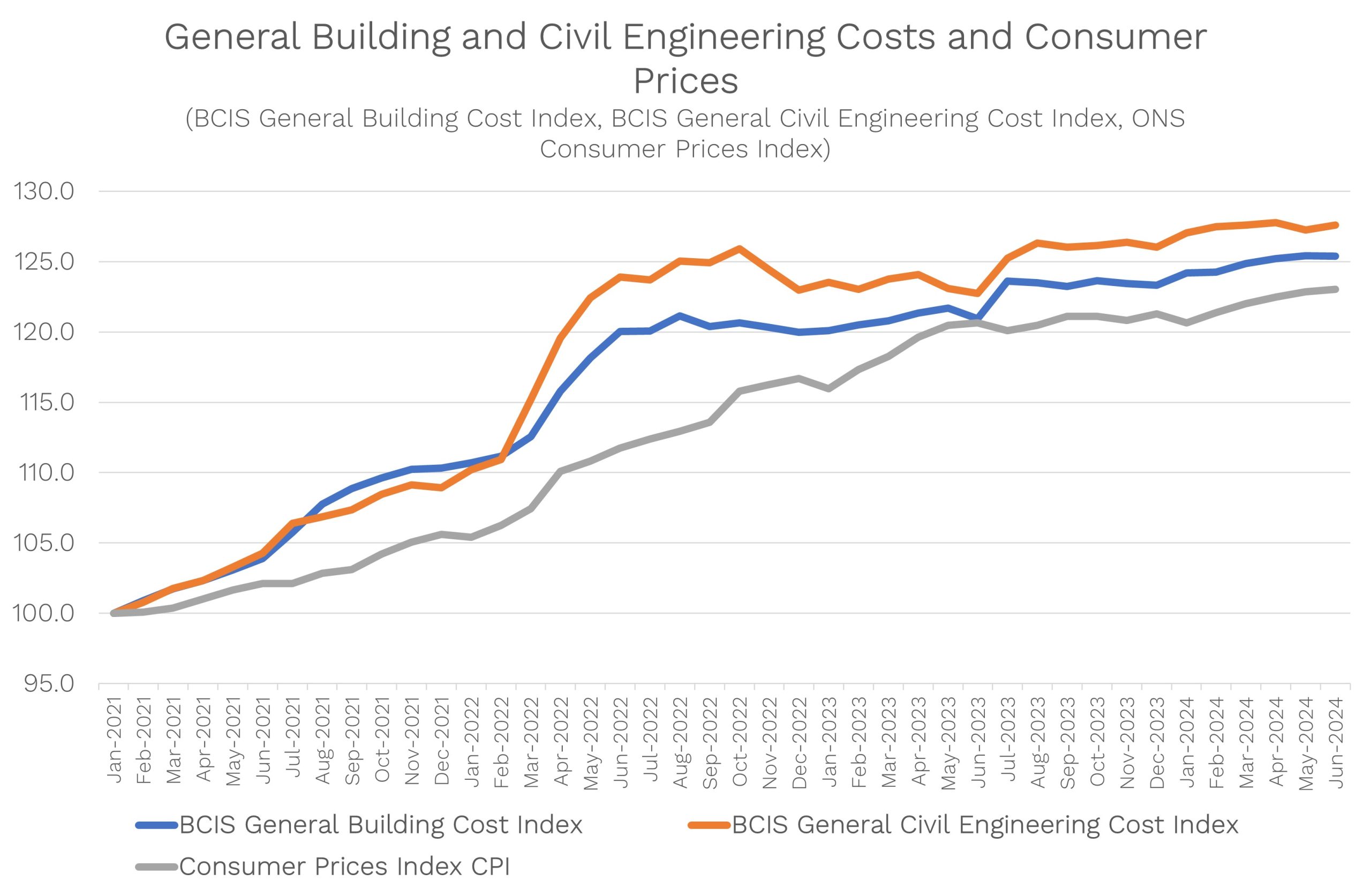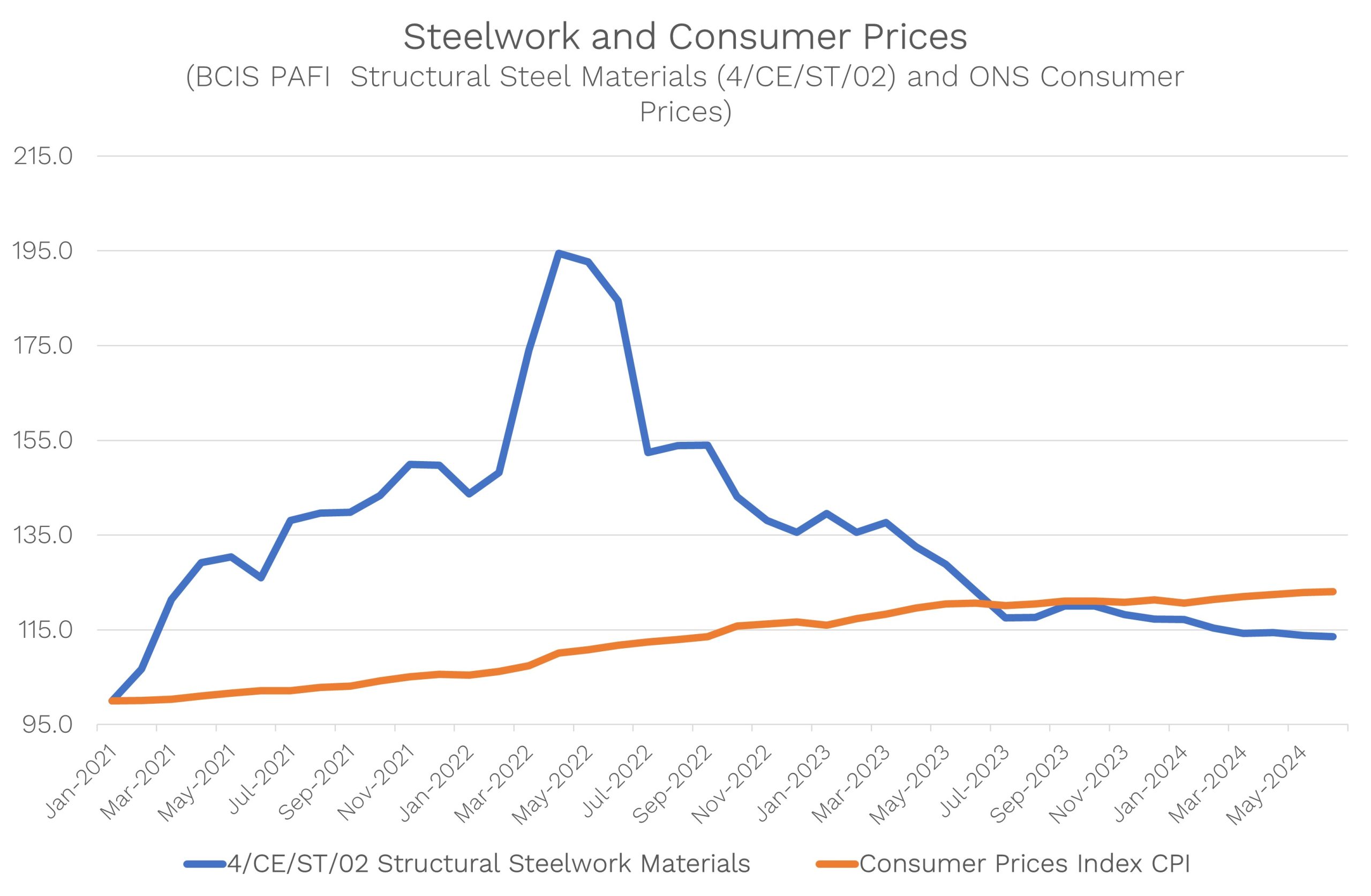This tool provides a comprehensive, detailed and easy to use method of measuring cost movement for building and civil engineering. Widely used in the construction and infrastructure sector to help fairly allocate risk between the client and sub-contractors.
Published: 07/08/2024
Price Adjustment Formulae Indices (PAFI) v Consumer Price Index (CPI)
In the past there’s been an unfortunate trend for construction clients to use general inflation indices in escalation clauses on construction contracts. But this is something we’d never advise.
Here are six reasons why it’s always better to use detailed construction indices – such as the Price Adjustment Formulae Indices (PAFI), part of our BCIS CapX package,– for fluctuating prices on a construction contract, rather than an index that includes the price of bread.
-
Keep in mind the first two of our golden rules for choosing an index:
- Be clear about what you want to measure and how you want to apply it.
- Choose an index that is measuring the costs that most closely match the above.
If you want to measure inflation on a construction contract, it makes no sense to index it to non-construction costs such as food and clothes. PAFI measures changes to specific construction resources or work categories, whereas CPI is a general inflation measure based on non-construction costs.
-
Dramatic variations
The movement in construction costs and general inflation can vary quite dramatically. For example, on a 36-month contract let in January 2021, there were months over the three-year period where the difference between CPI and civil engineering cost increases was over 12%, while the difference between CPI and building cost increases was over 8%.

Source: BCIS
Figure 1: General building and civil engineering costs and consumer prices
For particularly volatile resources, the difference can be even greater. For example, over the same period, there were months when steelwork had increased 80% more than CPI. Steel prices fell in the latter months and, at the end of the contract, showed an increase less than CPI. (See graph below). Using PAFI allows the changes to be applied in the period when the expenditure is made.

Source: BCIS
Figure 2: Comparison of ONS CPI and PAFI 3/S2 Structural Steelwork Materials Index
-
Specifically tailored and up-to-date
PAFI indices track inflation for more than 200 resources and work categories to meet the specific needs of the industry. This allows resources to be modelled to a specific project design. The monthly PAFI index also allows inflation to be applied in the month the cost occurs – an advantageous feature as it provides results that most closely match actual costs as they occur.
-
PAFI are the industry standard
The formulae fluctuations clauses in the leading standard construction contracts are designed to be used with the PAFI indices. The Joint Contracts Tribunal (JCT) issues a guidance note on how to apply PAFI; the New Engineering Contract (NEC) is set out to facilitate their use in its Secondary Option XI Clause for price adjustment for inflation.
-
Using CPI adds additional risk
A contractor will give their best price if the risk of inflation in their costs is clearly identified. Using CPI, or some other non-construction index, requires an estimate – not just of their own cost increases, but the movement in CPI – introducing an additional risk.
-
Longevity
Since they were introduced in the 1970s, PAFI has been the tried-and-trusted method for linking contracts for inflation.
Read more: Our 6 golden rules for choosing an index
Read more: Why has interest there been a surge of interest in PAFI?
Read more: PAFI Case Study: Crossrail
